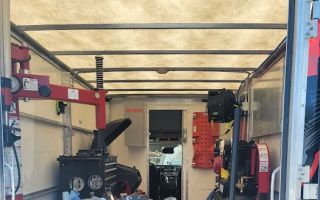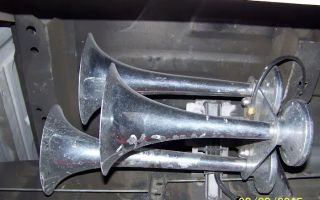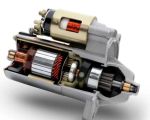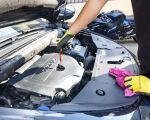- 1-Understanding-Car-Transmission-Overheating
- 2-Common-Causes-Of-Transmission-Overheating
- 3-Step-by-Step-How-To-Fix-Car-Transmission-Overheating
- 4-Real-World-Cases-Of-Transmission-Overheating
- 5-Preventing-Future-Transmission-Overheating
- 6-When-To-Call-Professional-Help
1. Understanding Car Transmission Overheating
Transmission overheating is a critical issue that can severely impact your vehicle’s performance and longevity. Essentially, it occurs when the transmission fluid becomes excessively hot, causing the transmission components to overheat. This can lead to poor shifting, slipping gears, or even complete transmission failure if not addressed promptly.

Discount Transmission
14401 Hillside Ave., Jamaica, NY 11435, USA
Why Transmission Overheating Is Dangerous
The transmission relies heavily on fluid to lubricate and cool its internal parts. When overheating happens, the fluid breaks down and loses its ability to protect the transmission. This accelerates wear and tear, increasing the risk of costly repairs or replacements.

Junior Auto Body Solutions LLC
10409c Merrick Blvd, Jamaica, NY 11433, USA
Recognizing the Signs
Common symptoms of overheating include warning lights on the dashboard, a burning smell, delayed or harsh shifting, and unusual noises. Early detection is key to preventing extensive damage.
2. Common Causes of Transmission Overheating
Several factors can contribute to transmission overheating, each requiring different approaches for resolution.
Low or Contaminated Transmission Fluid
Insufficient or dirty transmission fluid reduces the cooling and lubricating efficiency, making overheating more likely. Regular fluid checks and changes are crucial.
Heavy Towing or Load
Excessive towing or carrying heavy loads generates extra heat. Vehicles not equipped with proper cooling systems are more vulnerable under these conditions.
Malfunctioning Transmission Cooler
The transmission cooler helps regulate temperature. If it is clogged or damaged, heat builds up quickly, leading to overheating.
Driving Habits and Environmental Factors
Stop-and-go traffic, hot weather, or aggressive driving can exacerbate transmission temperature problems.
3. Step-by-Step How to Fix Car Transmission Overheating
Addressing transmission overheating requires a systematic approach. Here is a detailed guide:
Step 1: Check Transmission Fluid Level and Quality
Start by inspecting the fluid. If it’s low, refill with the manufacturer-recommended type. If it appears dark or smells burnt, a complete fluid change is necessary.
Step 2: Inspect and Repair the Transmission Cooler
Ensure the cooler is free from debris and leaks. Cleaning or replacing the cooler can significantly improve cooling efficiency.
Step 3: Adjust Driving Habits
Avoid heavy towing beyond your vehicle’s capacity and reduce aggressive driving. In hot climates, take breaks to allow the transmission to cool.
Step 4: Add an Auxiliary Transmission Cooler
If overheating persists, installing an additional cooler can help maintain safe operating temperatures during heavy use.
Step 5: Schedule a Professional Inspection
Complex problems may require a specialist’s assessment to diagnose internal transmission damage or electronic control issues.
4. Real-World Cases of Transmission Overheating
Consider the example of Mark, a delivery driver who experienced sudden transmission slipping during summer. His issue was traced back to a clogged transmission cooler and neglected fluid changes. After flushing the system and repairing the cooler, his transmission returned to normal function.
Another story involves Lisa, whose SUV overheated during a long tow. She underestimated the heat generated by towing a trailer without additional cooling support. Upgrading to an auxiliary cooler prevented future problems and gave her peace of mind.
Lessons Learned
These cases highlight the importance of regular maintenance and understanding your vehicle’s limits. Prompt action can save significant repair costs and extend transmission life.
5. Preventing Future Transmission Overheating
Prevention is always better than repair. Here are some tips to avoid transmission overheating:
Regular Fluid Checks and Changes
Follow the vehicle manufacturer’s guidelines for fluid maintenance to keep the transmission properly lubricated and cooled.
Proper Use and Load Management
Stay within towing and payload capacities and adjust driving style to reduce strain on the transmission.
Routine Inspections
Have your transmission system inspected periodically by professionals to detect early signs of trouble.
6. When to Call Professional Help
If you notice persistent overheating symptoms despite your efforts, it’s time to seek expert assistance. Professional mechanics have the tools and knowledge to diagnose underlying problems and perform necessary repairs.
Reliable Support from Rescue & Towing
For urgent cases or when your vehicle becomes immobile due to transmission failure, Rescue & Towing offers prompt and reliable service. They can provide towing, emergency repairs, and connect you with trusted mechanics to get your car back on the road safely.





























